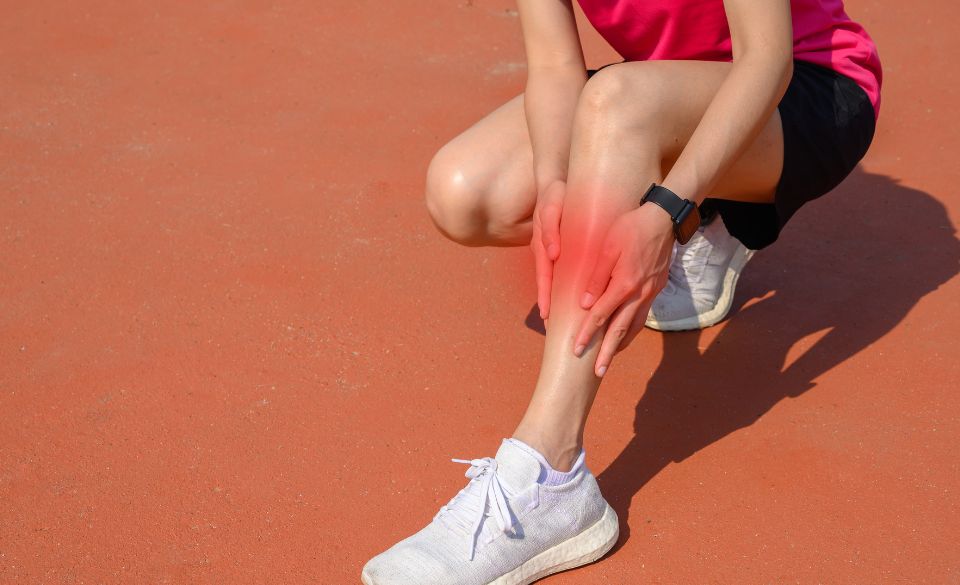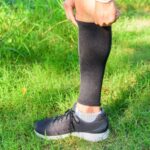
Do Calf Compression Sleeves Work For Shin Splints
Page Contents
What Are Shin Splints
Shin splints, also commonly known as medial tibial stress syndrome (MTSS), is a condition that causes pain and swelling along the shinbone (tibia) of one or both legs. This pain is usually felt on the outer side of the lower leg, though the exact cause of shin splints can vary significantly from person to person.
Shin splints are most commonly experienced by athletes who participate in sports that involve running, jumping, and activities that place a lot of strain on the lower legs. They are also commonly experienced by people who have recently started running or doing any other physical activity after a period of inactivity.
The most common cause of shin splints is overuse of the muscles and tissues located along the shinbone. Over time, this can cause inflammation of the tendons and muscle tissues, leading to pain and tenderness along the shinbone. Other causes of shin splints include wearing ill-fitting shoes, running on a hard surface, weak calves, or having poor running or walking mechanics.
Symptoms of shin splints include pain and tenderness along the shinbone that can range from a dull ache to a sharp pain. People with shin splints may also experience swelling and warmth along the affected area.
Treating shin splints depends on the severity of the condition. The most important treatment is rest from the particular activity. Anti-inflammatory medications, such as ibuprofen, may help reduce pain and swelling. Ice and gentle stretching may also help to relieve pain, as well as lowering the intensity of physical activity. In more severe cases, physical therapy or orthotics may be necessary.
It’s important to seek medical attention if pain persists or worsens. Shin splints can be serious if not properly treated and can lead to more severe injuries, such as stress fractures.
In order to prevent shin splints, it’s important to wear proper fitting shoes that are designed for the activity being done. Additionally, make sure to stretch before any activity and strengthen muscles in the lower legs. It’s also important to increase physical activity slowly and limit running on hard surfaces.
What Causes Shin Splints
Shin splints, also known as medial tibial stress syndrome, are characterized by pain in the shins of the lower legs. This condition is common in athletes who engage in running or jumping activities. Shin splints are most often caused by overuse of the muscles, ligaments, and tendons around the shin bone, as well as bone stresses due to poor running technique or tight calf muscles.
When the muscles of the lower leg are overworked, the muscle fibers become tight, swollen, and irritated, which can lead to inflammation. Other forms of shin splints are caused by excessive pressure on the tibia, either from too much sudden activity or from running on uneven surfaces. Repetitive motion of leg muscles can create a strain on the tibia, resulting in shin pain.
Flat feet can also contribute to the development of shin splints. Lack of arch support and inadequate cushioning in the shoes can cause sharp, shooting pains when the lower leg is used in running or other sports. When the foot strikes the ground, the muscles and other soft tissues of the shin become irritated, leading to pain and tenderness.
Muscle imbalances are another common cause of shin splints. For example, when certain muscles are weak, the weaknesses can lead to imbalances in the body, such as the calf muscles and tibialis anterior. Imbalances in the lower leg muscles can cause a misalignment of the bones, leading to shin pain.
Finally, weak balance reaction muscles are also associated with shin splints. If the calf muscles are weak and cannot properly cushion the impact of the body weight on the foot and shin, the shinbone can become overstressed, resulting in pain. Stretching and strengthening exercises for the lower leg muscles may help to improve balance reaction and reduce the risk of developing shin splints.
Shin splints can be prevented or treated through proper stretching and strengthening exercises, as well as proper running technique and supportive shoes. Rest is an important component of shin splints treatment, as it gives the muscles and connective tissues time to heal. If shin splints are left untreated, they can become more severe and lead to more serious conditions, such as stress fractures.
Do Calf Compression Sleeves Work For Shin Splints
If you experience any lingering pain or discomfort in your shin as a result of exercise, you may be asking yourself – do calf compression sleeves work for shin splints? The answer is yes, but it might be helpful to understand a little bit more about what calf compression sleeves are and how they can help with shin splint pain.
Calf compression sleeves are specifically designed to provide compression to the calf muscles and the surrounding tissue in order to improve circulation, reduce inflammation, and provide additional support. They are constructed from a material that is made to fit tightly around your calf and ankle, and provide a “hugging” sensation that is meant to provide relief from pain or discomfort. The recommended compression for compression sleeves differs for each individual, as some may require more or less than others depending on their specific symptoms.
The pain caused by shin splints typically originates in the muscles along the shin. The tightness and tension in these muscles can be reduced by providing good support and stability. When wearing a calf compression sleeve the band applies pressure to the calf muscle and the surrounding tissues, which can help to improve circulation, reduce inflammation, and provide stability to the shin. Additionally, the compression can help to reduce the strain on the muscles, resulting in less pain during physical activity.
Calf compression sleeves can also be beneficial in preventing shin splints. The compression sleeve can be worn before exercising and provide proprioceptive feedback to your calf muscles. This feedback can help to prevent the muscles from overworking or tensing up too much, which can help prevent the onset of shin splint pain.
Overall, calf compression sleeves can be very helpful in both treating and preventing shin splint pain. It is important to note, however, that calf compression sleeves are not a cure-all for shin splints and should be used as part of a comprehensive treatment plan. It is still important to focus on improving muscle strength, flexibility, and endurance in order to fully recover from shin splints.


